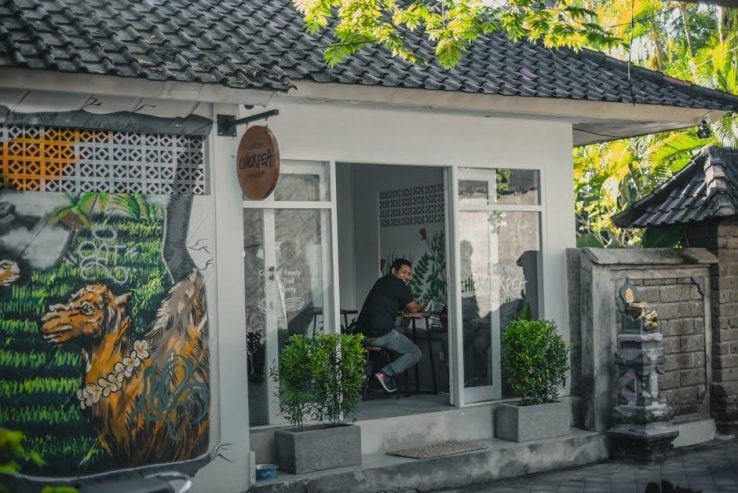A slow cooker‚ like the popular Crock-Pot‚ is a kitchen appliance designed for long‚ unattended cooking. It uses low heat over extended periods to prepare flavorful meals. Perfect for busy households‚ it offers convenience and versatility‚ making it ideal for a variety of dishes‚ from hearty stews to tender roasts‚ while retaining rich flavors and nutrients.
1.1 What is a Slow Cooker?
A slow cooker‚ often referred to by the brand name Crock-Pot‚ is a countertop electrical cooking appliance designed for long‚ unattended cooking. It consists of a heated pot with a lid‚ using low temperatures over extended periods to simmer foods. Ideal for preparing meals like stews‚ soups‚ and roasts‚ it ensures tender results by breaking down tough ingredients gradually. Its simplicity and hands-off operation make it a versatile kitchen essential.
1.2 Benefits of Using a Slow Cooker
Using a slow cooker offers numerous advantages‚ including effortless meal preparation and hands-off cooking. It retains flavors and nutrients‚ ensuring delicious and healthy dishes. Energy-efficient and cost-effective‚ it simplifies cooking for busy schedules. Ideal for tenderizing tough cuts of meat‚ it provides consistent results with minimal effort. Its versatility allows for a wide range of recipes‚ from hearty stews to flavorful roasts‚ making it a practical addition to any kitchen.
Essential Safety Tips
Always follow safety tips when using a slow cooker. Never cover it or place it near curtains or flammable materials. Keep children away and avoid touching hot surfaces.
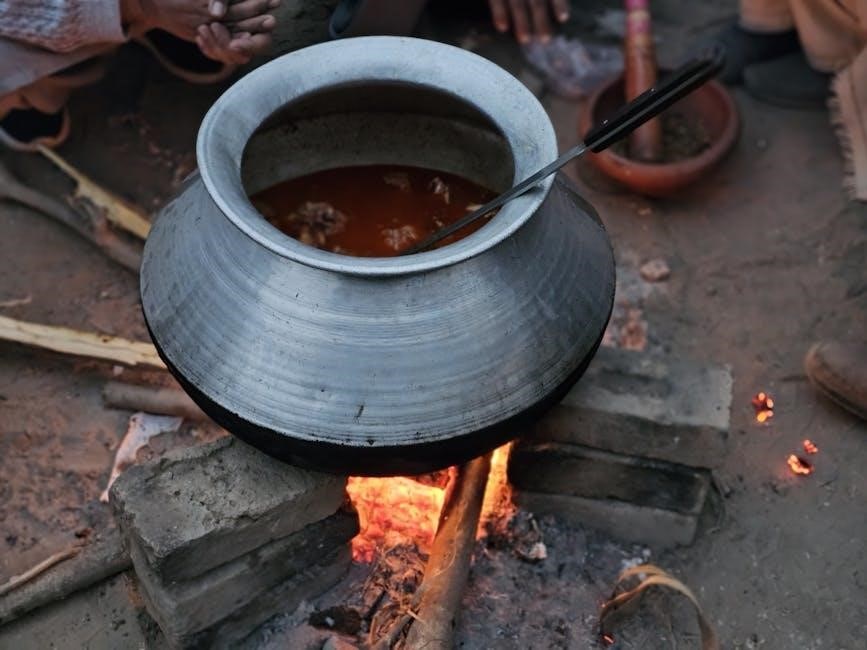
2.1 General Safety Precautions
Always follow safety guidelines when using a slow cooker. Ensure the appliance is placed on a stable‚ heat-resistant surface and never cover it during operation. Avoid placing it near curtains or flammable materials. Keep children away and never touch the hot surfaces. Do not move the cooker while it’s in use‚ and use heat-resistant utensils to handle food. Adhere to these precautions to ensure safe and efficient cooking.
2.2 Placement and Usage Guidelines
Place the slow cooker on a stable‚ flat surface away from curtains or combustible materials. Never position it below hanging fabrics or near open flames. Ensure proper ventilation to avoid moisture buildup. Plug the cooker directly into a wall outlet‚ avoiding extension cords. Keep the area around it clear to prevent accidents and ensure smooth operation during cooking.
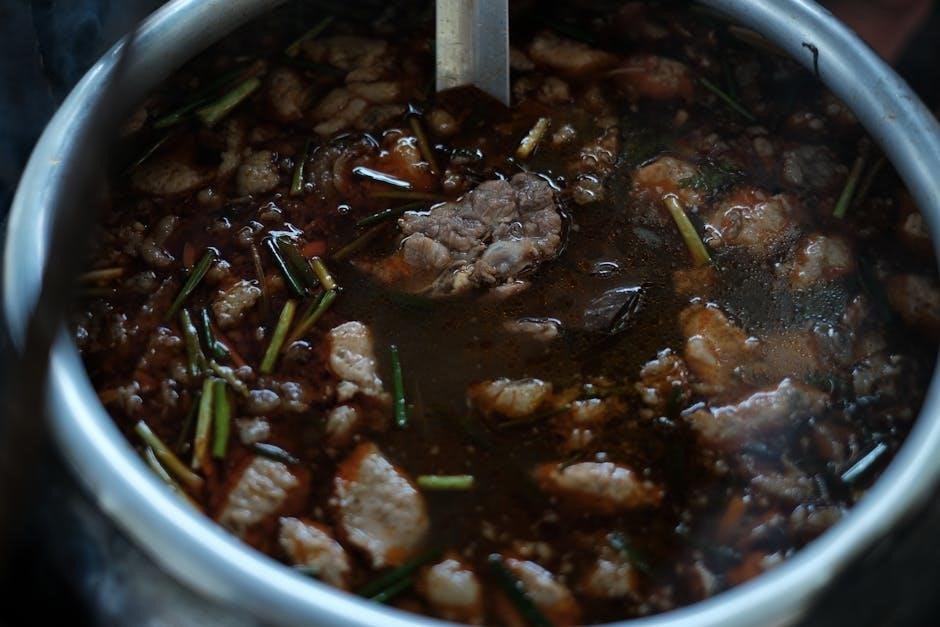
Step-by-Step Guide to Using a Slow Cooker
Start by preparing ingredients‚ then place them in the pot. Set the desired temperature and time‚ secure the lid‚ and let the cooker do the work. Perfect for hands-off meals‚ it ensures tender results with minimal effort‚ ideal for busy schedules and delicious‚ stress-free cooking experiences.
3.1 Preparing Ingredients
Chop vegetables and season meats as desired. Brown meat in a pan if needed for enhanced flavor. Place vegetables at the bottom of the pot and add meat on top. Ensure all ingredients are ready before cooking. This ensures even cooking and prevents undercooked or overcooked dishes‚ making meal prep efficient and stress-free. Proper preparation is key to a successful slow-cooked meal every time.
3.2 Placing Ingredients in the Pot
Layer ingredients in the slow cooker pot‚ starting with vegetables at the bottom. Place meat or protein on top of the vegetables. Avoid overfilling the pot‚ leaving about 1-2 inches of space. Add liquids appropriately‚ ensuring even distribution. Secure the lid tightly after arranging all ingredients to trap heat and flavors‚ promoting consistent cooking results throughout the dish.
3.3 Setting the Temperature and Time

Select the appropriate temperature (low or high) based on your recipe and schedule. Cooking times typically range from 4-8 hours on low and 2-4 hours on high. Ensure the timer is set accurately for the specific dish. For example‚ tougher cuts of meat may require 6-8 hours on low‚ while softer ingredients might need only 2-3 hours on high. Always refer to the recipe for precise guidance.
3.4 Securing the Lid
Place the lid gently on the slow cooker to ensure a proper seal. Align the lid correctly to prevent steam from escaping. For models with a lid lock‚ secure it to maintain pressure. A tight seal is crucial for even cooking and retaining moisture. Avoid lifting the lid during cooking unless necessary‚ as it can release heat and extend cooking time. Always handle the lid and handles with care‚ as they may be hot.
Cooking Time Guidelines
Cooking times vary based on the slow cooker’s settings. Low settings typically take 6-8 hours‚ while high settings take 3-4 hours. Adjust according to food type.
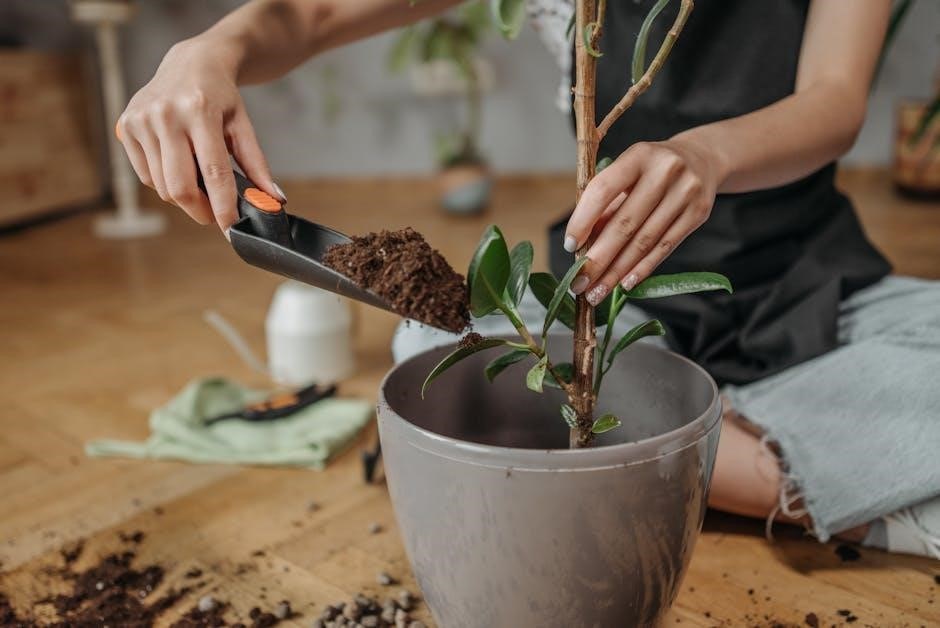
4.1 Understanding Low and High Settings
The low setting on a slow cooker is ideal for dishes requiring extended cooking‚ typically 6-8 hours‚ perfect for tenderizing tougher cuts of meat. The high setting cooks faster‚ usually within 3-4 hours‚ suitable for softer ingredients or when time is limited. Both settings ensure even cooking‚ but choosing the right one depends on the recipe and your schedule.
4.2 Recommended Cooking Times for Common Foods
For tender results‚ chicken breasts cook in 4-5 hours on low or 2-3 hours on high. Ground meats like chili or stew meat typically need 6-8 hours on low or 3-4 hours on high. Vegetables such as carrots and potatoes require 6-8 hours on low or 4-6 hours on high. Tough cuts like chuck roast are best cooked on low for 8-10 hours or high for 4-6 hours for perfect tenderness.
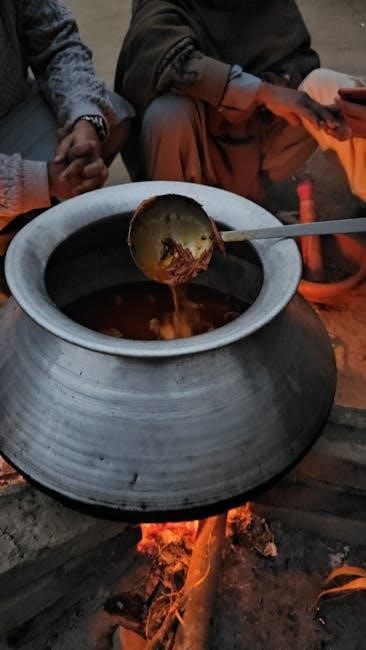
Choosing the Right Recipes
Select recipes suited for slow cooking‚ such as stews‚ roasts‚ and chili. Ideal for tenderizing tough cuts and preparing affordable‚ flavorful meals with minimal effort.
5.1 Selecting Appropriate Dishes for Slow Cooking
Opt for dishes that benefit from extended cooking‚ like stews‚ roasts‚ and chili. Tough meats‚ such as chuck roast‚ become tender with slow cooking. Vegetables like potatoes and carrots also fare well. Affordable ingredients can create hearty‚ flavorful meals with minimal effort‚ making slow cooking ideal for busy households seeking delicious results without constant supervision.
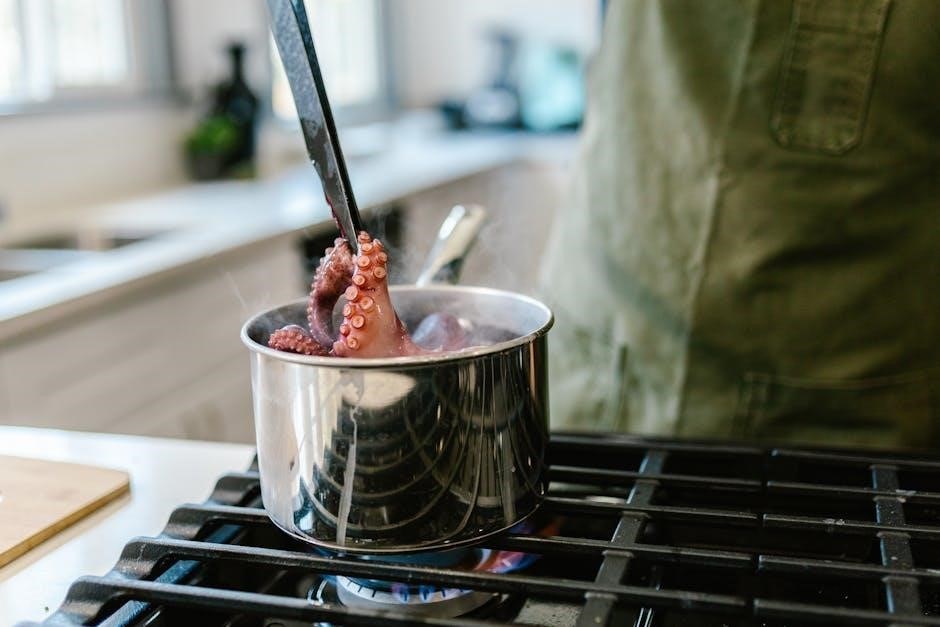
5.2 Adapting Recipes for Your Slow Cooker
When adapting recipes for a slow cooker‚ consider adjusting liquid amounts due to moisture retention. Generally‚ use 1/4 to 1/2 less liquid than the original recipe. Convert cooking times by tripling the duration for low settings and doubling for high settings. Place tougher ingredients like meats at the bottom and delicate vegetables towards the top. Add dairy products and herbs in the last hour to preserve flavor and texture. For grains‚ ensure sufficient liquid and adjust cooking times as needed. Browning meat beforehand enhances flavor‚ and some recipes may require pre-cooking steps. Experiment with desserts by adjusting temperatures and times. Scale recipes according to your slow cooker’s size and avoid dishes requiring quick cooking or specific textures. This approach ensures delicious‚ well-adapted slow-cooked meals.
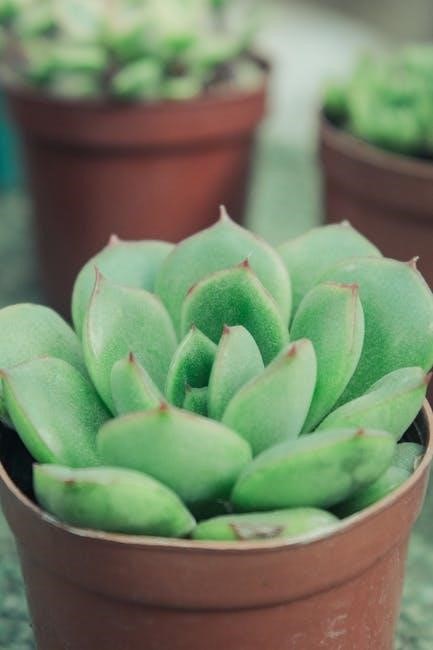
Common Mistakes to Avoid
- Overfilling the pot‚ which can lead to uneven cooking and safety hazards.
- Not allowing the slow cooker to cool before cleaning or storing it.
- Placing the slow cooker near combustible materials or covering it while in use.
6.1 Overfilling the Pot
Overfilling the slow cooker can lead to food spilling over during cooking‚ creating a mess and potentially causing burns. It also disrupts even heat distribution‚ resulting in undercooked or unevenly cooked meals. To avoid this‚ leave at least 1 inch of space at the top of the pot. This ensures proper circulation of steam and prevents overflow. Always refer to your slow cooker’s maximum capacity guidelines for safe and effective cooking.
6.2 Not Allowing the Cooker to Cool
Never handle or clean the slow cooker immediately after cooking‚ as the surfaces remain extremely hot. Allowing the cooker to cool down for at least 30 minutes prevents burns and ensures safe handling. Forcing it to cool quickly can damage the heating element or outer surfaces. Always let it cool naturally to maintain its durability and avoid potential electrical issues. This also prevents accidental burns and extends the appliance’s lifespan.
Cleaning and Maintenance
Regular cleaning is essential for maintaining your slow cooker. Wash the lid and pot with warm soapy water after each use. Avoid abrasive cleaners to prevent scratches. Dry thoroughly to prevent rust and ensure proper storage. Always unplug before cleaning and never submerge electrical components in water for safety.
7.1 Cleaning the Pot and Lid
Regularly clean the pot and lid with warm‚ soapy water. Avoid using abrasive cleaners or scourers‚ as they can damage the surfaces. For tough stains‚ let the pot soak overnight. Dry thoroughly after washing to prevent rust or water spots. Never submerge electrical components in water. Cleaning ensures optimal performance and hygiene for your slow cooker.
7.2 Storing the Slow Cooker
Store the slow cooker in a cool‚ dry place when not in use. Ensure the pot and lid are completely dry to prevent moisture buildup. Avoid stacking heavy objects on top of the cooker to maintain its shape and functionality. For extended storage‚ consider placing the components in their original packaging or a protective cover to safeguard against dust and damage.
Advanced Features of Modern Slow Cookers
Modern slow cookers often include programmable timers‚ sauté functions‚ and pressure cooking capabilities. These features enhance versatility‚ allowing for searing meat and cooking a variety of dishes efficiently.
8.1 Programmable Timers
Programmable timers in modern slow cookers allow users to set exact cooking times and temperatures‚ ensuring dishes are perfectly cooked. This feature is especially useful for busy individuals‚ as it enables them to prepare meals in advance and return to a ready-to-serve dish. Some models even offer delayed start options‚ adding further convenience to the cooking process.
8.2 Sauté and Pressure Cooking Functions
Advanced slow cookers now offer sauté and pressure cooking functions‚ expanding their versatility. These features allow users to brown ingredients before slow cooking or prepare meals faster. The sauté function adds texture and flavor‚ while pressure cooking reduces cooking time significantly. These multi-functional capabilities make modern slow cookers indispensable for versatile and efficient meal preparation‚ catering to diverse culinary needs and preferences.
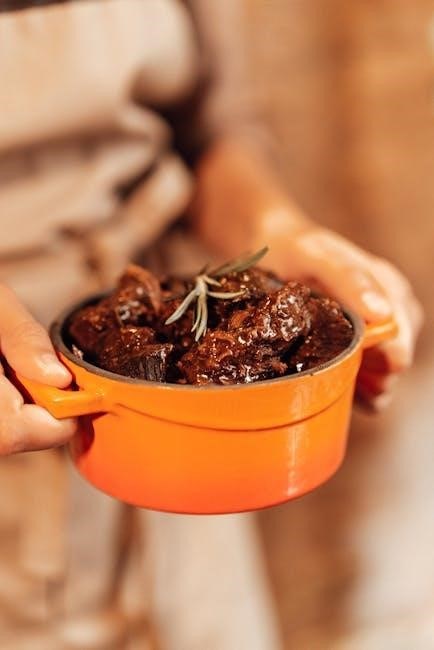
Troubleshooting Common Issues
Common issues include uneven cooking or lid sealing problems. Ensure the cooker is used correctly‚ and always follow safety guidelines to avoid such problems and ensure optimal performance.
9.1 Food Not Cooking Evenly
Food may not cook evenly due to improper placement or insufficient liquid. Ensure ingredients are layered correctly‚ with tougher cuts at the bottom. Avoid overcrowding the pot and use enough broth or sauce. Stirring midway can help distribute heat evenly. Always secure the lid tightly to maintain consistent cooking conditions and prevent steam from escaping‚ ensuring uniform cooking throughout the dish.
9.2 Lid Not Sealing Properly
A lid not sealing properly can lead to uneven cooking and reduced efficiency. Check for food residue or debris blocking the seal. Ensure the lid is aligned correctly and locked if your model has a locking mechanism. Avoid using excessive force‚ as this might damage the gasket. Regularly clean and inspect the lid and gasket for wear. If issues persist‚ consider replacing the gasket for a tighter seal.
Slow cookers offer convenience‚ flavor retention‚ and ease of use‚ making them a valuable kitchen tool. Start slow cooking today and enjoy delicious‚ stress-free meals!
10.1 Summary of Key Points
A slow cooker‚ like the Crock-Pot‚ is a versatile kitchen appliance ideal for preparing flavorful meals with minimal effort. It retains nutrients and flavors‚ making it perfect for dishes like stews‚ roasts‚ and casseroles. By following simple safety guidelines and cooking times‚ anyone can create delicious‚ stress-free meals. Start slow cooking today and enjoy the convenience of hearty‚ home-cooked food with ease!
10.2 Encouragement to Start Slow Cooking
Start your slow cooking journey today and discover the joy of effortless‚ delicious meals! With minimal prep and hands-off cooking‚ a Crock-Pot simplifies mealtime. Experiment with a variety of recipes‚ from hearty stews to flavorful roasts. Perfect for busy schedules‚ slow cooking ensures a home-cooked meal is always ready. Dive in and enjoy the convenience‚ versatility‚ and mouthwatering results that slow cooking offers!
